Bringing back Joey
Nothing seemed to help a kitten with rare skin disease. Then an innovative treatment approach at the VMC brought him and his family relief.
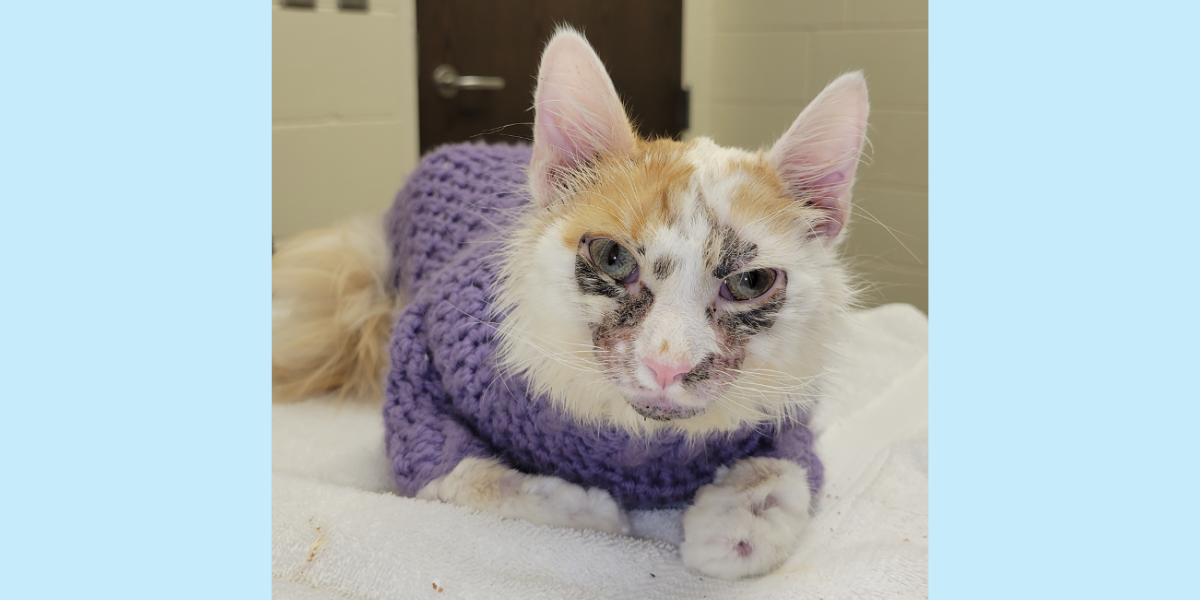
Nothing seemed to help a kitten with rare skin disease. Then an innovative treatment approach at the VMC brought him and his family relief.
Joey, a young cat diagnosed with a rare skin disease called proliferative and necrotizing otitis externa, sees success after his veterinary dermatologist tried an innovative treatment approach.
Joey’s visit to Elizabeth Krech’s home was supposed to last a week while his foster family went out of town for Thanksgiving.
“He was around four weeks old and just itty bitty—he fit in the palm of your hand,” Krech says of the white and orange kitten. But soon, her family fell in love, and a week turned into forever.
Krech had no idea that the tiny kitten she had just adopted soon would be fighting for his life. In March 2022, she noticed a bump on Joey’s neck that looked like a puncture wound. Thinking another cat may have bitten him, she made a veterinary appointment.
The wound ended up healing well, and she almost canceled the appointment, but a few small spots of skin irritation on his face led her to keep it. When Dr. Tony Cologgi at the Hastings Veterinary Clinic examined Joey, he told Krech the little kitten was very sick.
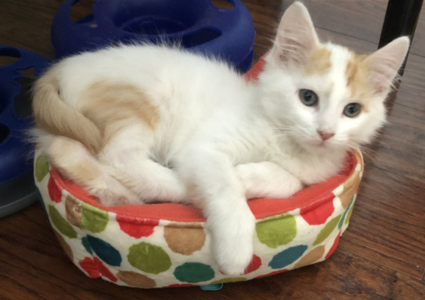
Over the next couple of weeks, Cologgi tried treating Joey, but nothing seemed to work
“It started kind of slow and very small. Pretty early on there were just some thin patches on his fur on his face,” Krech says. “Then it just accelerated fairly quickly. He was getting worse. His ears were turning black—I just didn’t know what to do.”
The disease continued to progress, causing the skin on his face to swell—particularly around his eyes, which forced them shut.
In early April, Cologgi referred Joey to the Emergency and Critical Care Service at the VMC. Once there, Dr. Sandra Koch, head of the hospital’s Dermatology Service, examined Joey and diagnosed him with a very rare skin disease called proliferative and necrotizing otitis externa (PNOE).
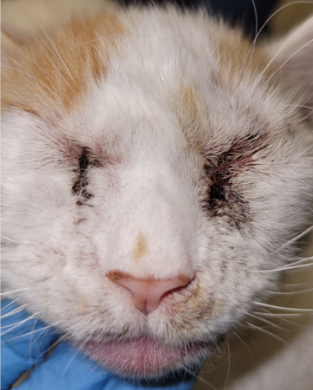
Typically affecting the ears and ear canals of kittens between two and six months old, PNOE causes painful lesions, plaques, tissue death, sometimes causing intense itchiness. Some cats with the disease, like Joey, may also experience fever, loss of appetite, and lethargy. In Joey’s case, his disease also affected the skin on other parts of his body, including patches on his face, stomach, and feet.
Koch began a treatment regimen that included various combinations of oral steroids, antibiotics, and topical immunosuppressants and had Joey back for weekly checkups. To prevent Joey from harming himself by scratching his itchy skin, a cone was placed around his neck.
“He could not live a normal happy kitten life during the treatment as his immune system was not yet strong,” Koch says, “plus he was receiving immunosuppressive medications and he could not be vaccinated yet, so he had to be isolated until he could have a normal life again.”
Part of his treatment needed to be administered every 90 minutes, but Krech and her daughter Mikayla took on the challenge in hopes of seeing the young cat get better. Sometimes, they would bring the family’s two bearded dragons with Joey for his appointments as they helped keep him calm.
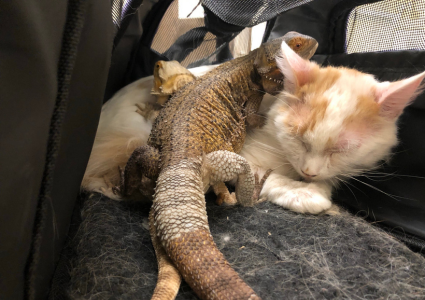
More than 30 days into his treatment, Joey’s condition hadn’t improved. Black patches of infected skin marred his face and clumps of flesh reminiscent of cauliflower bulged from his ears. Ulcers also developed in his eyes, which remained swollen shut. Koch decided to try a medication called Apoquel, which is typically prescribed to dogs with skin allergies.
“I had to be creative with his treatment and take more risks, as there were not many other options,” she says. “We did not know how well he would respond and tolerate Apoquel, especially being so young, however, he responded quickly and tolerated it very well.”
Within the first 24 hours, Krech said she noticed Joey having more energy. As the days went by, his appearance began to improve, with the lesions and swelling slowly subsiding.
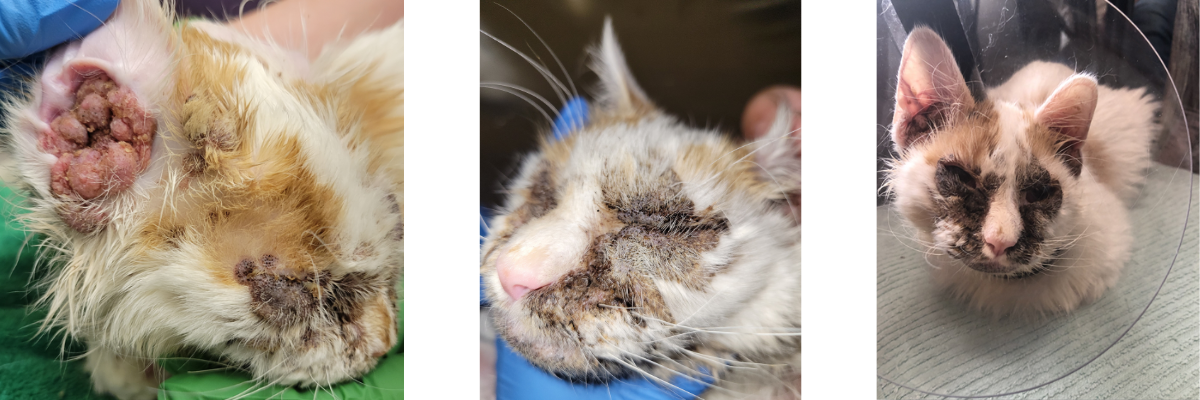
Two months into Joey’s ordeal, the VMC staff got a welcome surprise during a follow-up visit.
“Everybody was in tears because you could see his eyes for the first time in eight weeks,” Krech says, noting they were already swollen shut by the time he arrived for his emergency visit in April. “He was starting to look like a cat again.”
It took another month for Joey’s symptoms to subside and his appearance to return to normal. On day 87 of the treatment, Koch declared him in full clinical remission, and Apoquel was eventually discontinued, meaning Joey was cured of PNOE.
“Most dermatology cases are chronic and cannot be cured,’ Koch says. “To be able to see him improve and then be able to stop the medication and know that he is now living a happy and healthy life, along with his family, is so rewarding and brings me much joy.”
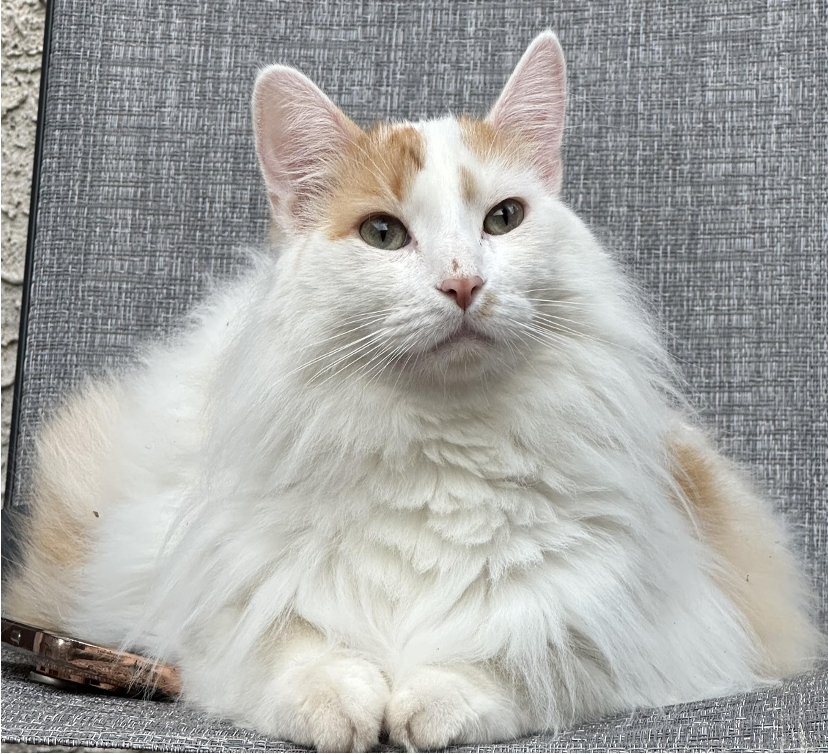
Koch and a peer from Tufts University Cummings School of Veterinary Medicine plan to submit Joey and another cat’s case and their successful treatment with Apoquel to a veterinary dermatology journal. Although Apoquel is not labeled for cats, she hopes their stories will help other cats diagnosed with PNOE that do not respond to the more conventional therapies.
As for Joey, he has grown into a big, healthy cat who enjoys spending his days watching birds visit the feeder outside the window and cuddling with his family members—particularly on their feet. Krech is very grateful for the care he received at the VMC and says knowing that his case may be used to help guide treatment for other cats is exciting.
“Hopefully no one else has to go through that intense of an experience,” she says. “But, it was worth the sleepless nights to see him alive and happy.”
Philanthropy is crucial to bringing innovative care to patients like Joey. You can make a gift today to support the Veterinary Medical Center's Dermatology Service by clicking here or by contacting Development Officer Will Haugen at hauge442@umn.edu or 612-625-7714 for more information.